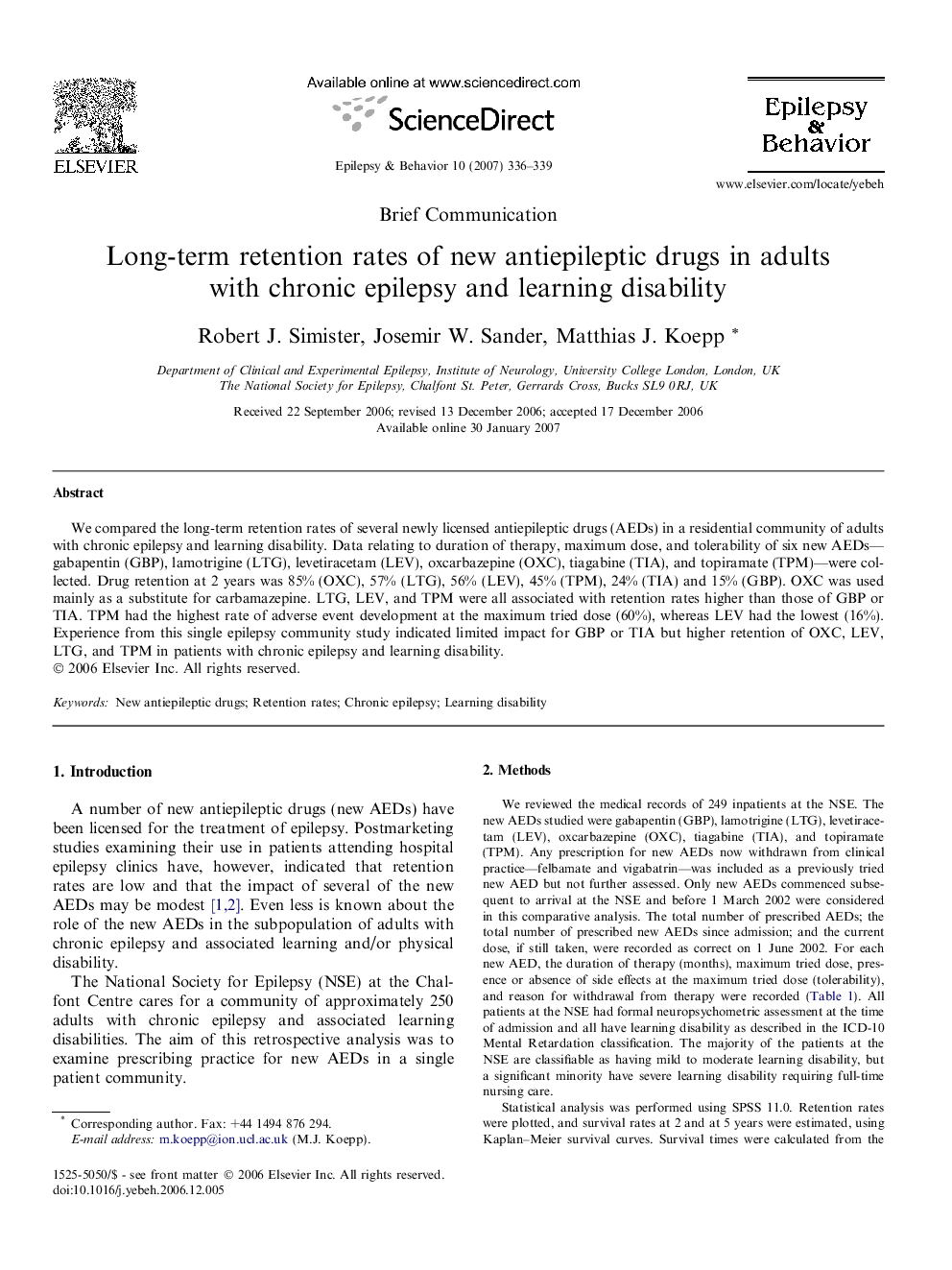| Article ID | Journal | Published Year | Pages | File Type |
|---|---|---|---|---|
| 3051384 | Epilepsy & Behavior | 2007 | 4 Pages |
We compared the long-term retention rates of several newly licensed antiepileptic drugs (AEDs) in a residential community of adults with chronic epilepsy and learning disability. Data relating to duration of therapy, maximum dose, and tolerability of six new AEDs—gabapentin (GBP), lamotrigine (LTG), levetiracetam (LEV), oxcarbazepine (OXC), tiagabine (TIA), and topiramate (TPM)—were collected. Drug retention at 2 years was 85% (OXC), 57% (LTG), 56% (LEV), 45% (TPM), 24% (TIA) and 15% (GBP). OXC was used mainly as a substitute for carbamazepine. LTG, LEV, and TPM were all associated with retention rates higher than those of GBP or TIA. TPM had the highest rate of adverse event development at the maximum tried dose (60%), whereas LEV had the lowest (16%). Experience from this single epilepsy community study indicated limited impact for GBP or TIA but higher retention of OXC, LEV, LTG, and TPM in patients with chronic epilepsy and learning disability.
